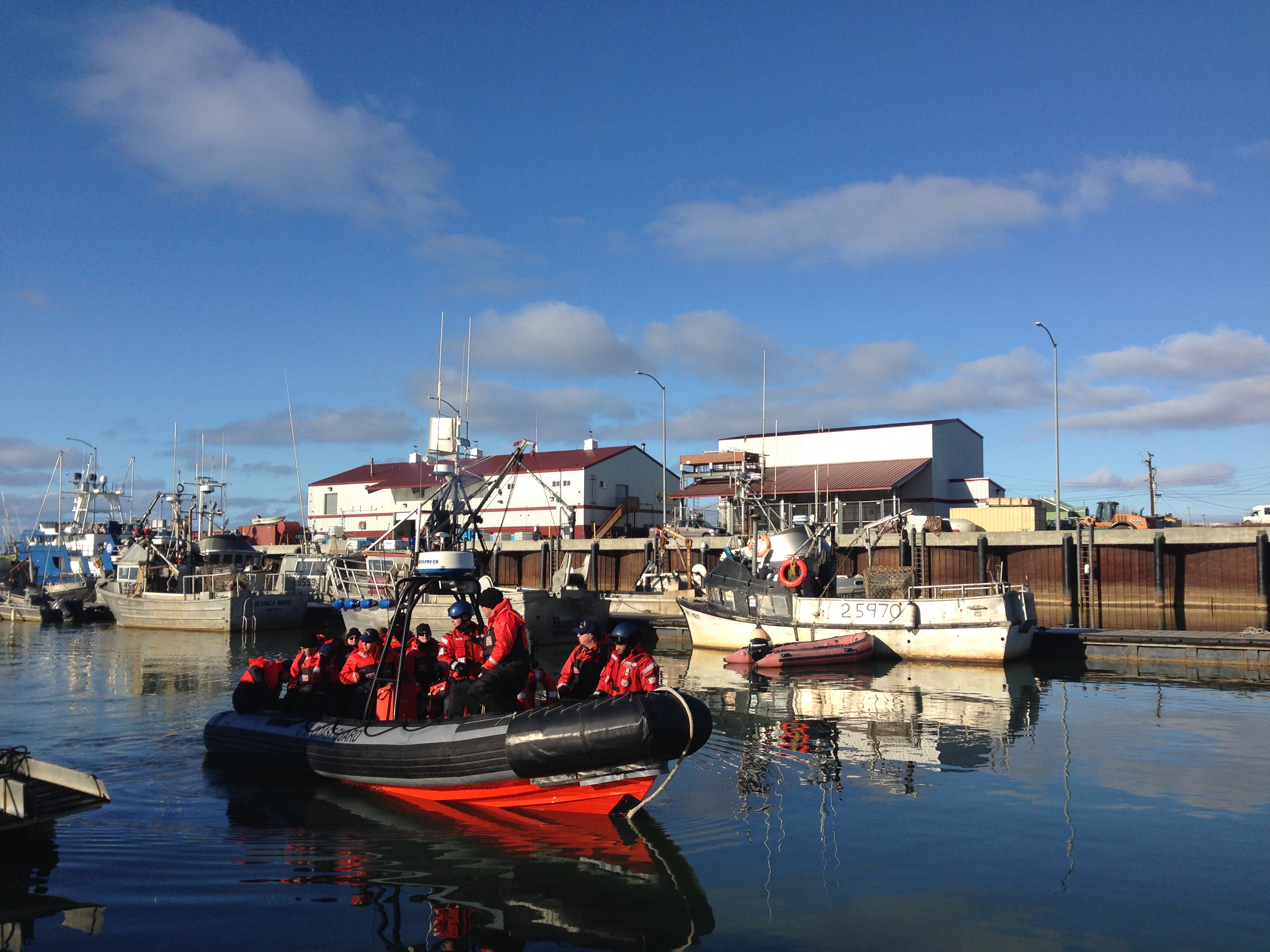
ABOARD THE USCGC MUNRO – Not long after Chinese warships teetered on the edge American waters during President Obama’s trip to Alaska last month and amid high tensions between the U.S. and Russia, a recent visit by the U.S. Coast Guard cutter Munro put the nation’s need for Nome’s port expansion into stark relief.
U.S. Coast Guard Captain Samuel Jordan says Arctic ports that can accommodate ships like the cutter Munro are few and far between. While patrolling the Bering Sea, he said the Coast Guard would benefit from deeper dredging at Nome’s port.
“We’d take advantage of any port that we can bring the ship into,” Captain Jordan explained, “especially logistics wise. Having another logistics hub for us is beneficial.”
Jordan captains the Munro and, at Nome’s current depth, he was forced to anchor the cutter miles offshore, ferrying goods and personnel to the docks in 25-foot dinghys.
Just about half of the Munro’s crew came ashore to do volunteer work cleaning up the docks for the afternoon. The crew crossed paths with Mayor Denise Michels, harbormaster Lucas Stotts, and members of Nome’s City Council at the small boat harbor. The Nome reps had been invited for lunch aboard the Munro. Donning Coast Guard issued survival suits, the group hopped aboard one of the dinghys and set off into the choppy seas.
“If you want to infiltrate the U.S. what more better place to do it than the Arctic?” Michels suggested.
In Nome, Michels explained, “there is no homeland security, so it’s just an interesting time for national security, homeland security.”
Nome’s role in national security has also been a topic of heated debate recent Port Commission meetings.
“The relationship with Russia and the geopolitical forces going on with our oil development and the defense of our country just makes Nome even more important and for us to ignore that would be a dereliction of duty,” said Port Commissioner Rolland Trowbridge.
At last week’s meeting, Trowbridge used Nome’s strategic location to advocate for deeper dredging. The current port expansion plan, which was finalized at a recent “Milestone Meeting” hosted by the U.S. Army Corps of Engineers, is to dredge to just 28 feet. But Port Director Joy Baker explains that, to meet the needs of cutters like the Munro and additional Arctic support vessels, it needs to go deeper.
“You can’t call it an Arctic port if you can’t accommodate the nation’s icebreaker fleet,” Baker argued, “so that’s why we’ve glommed on to the 36 number.”
The 36 number being the depth needed by icebreakers to safely enter and dock in Nome.
Back aboard the Munro, the Nome delegation crunched through churros and quickly zipped back into their survival suits. While waiting to climb down the 20-foot rope ladder that hung off the side of the Munro, Nome’s mayor emphasized the importance of the Coast Guard’s presence in the Arctic and Nome’s role in national security.
“We want more presence in the Arctic and anything we can do to promote the port of Nome is good for all of us,” Michels said.
While many hope that the Munro will someday be able dock at a truly deep-draft port in Nome, for now the Corps of the Engineers is moving forward its plan for a depth of 28 feet. It’s clear, though, that a deeper depth would cut down on the number of dinghy trips and even aid in the Coast Guard’s national security efforts in the Arctic.
Emily Russell is the voice of Alaska morning news as Alaska Public Media’s Morning News Host and Producer.
Originally from the Adirondacks in upstate New York, Emily moved to Alaska in 2012. She skied her way through three winters in Fairbanks, earning her Master’s degree in Northern Studies from UAF.
Emily’s career in radio started in Nome in 2015, reporting for KNOM on everything from subsistence whale harvests to housing shortages in Native villages. She then worked for KCAW in Sitka, finally seeing what all the fuss with Southeast, Alaska was all about.
Back on the road system, Emily is looking forward to driving her Subaru around the region to hike, hunt, fish and pick as many berries as possible. When she’s not talking into the mic in the morning, Emily can be found reporting from the peaks above Anchorage to the rivers around Southcentral.




